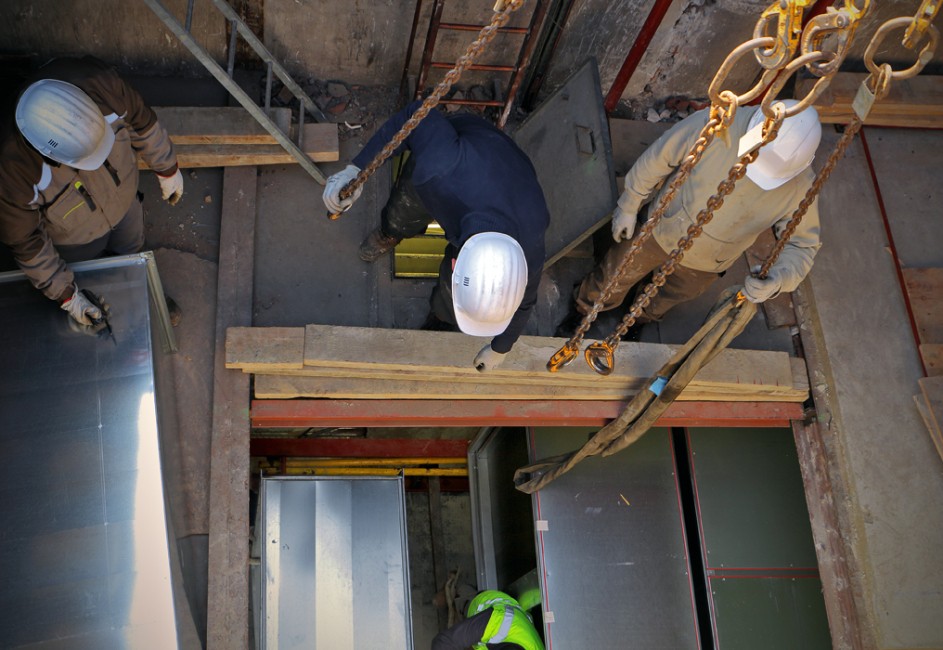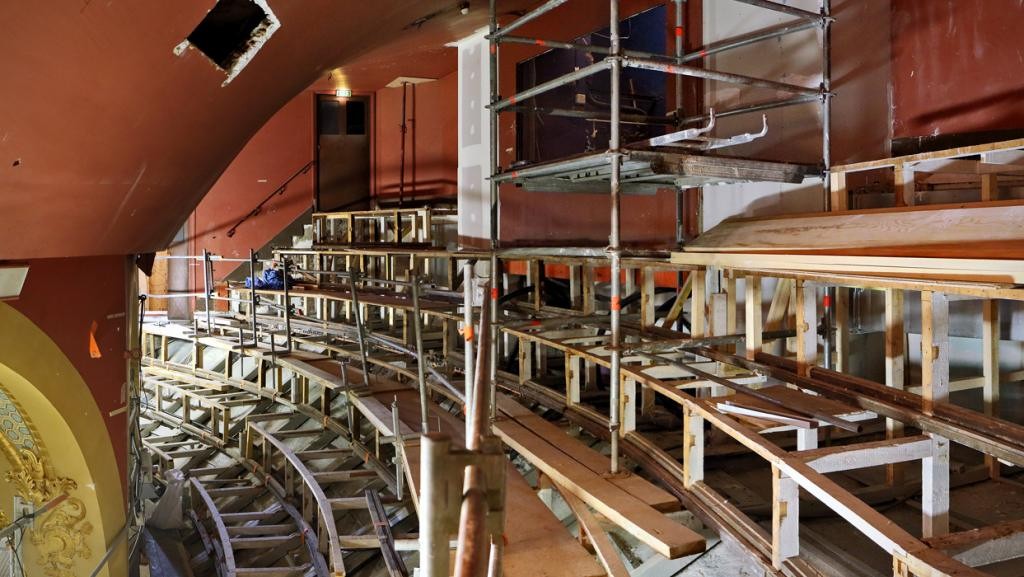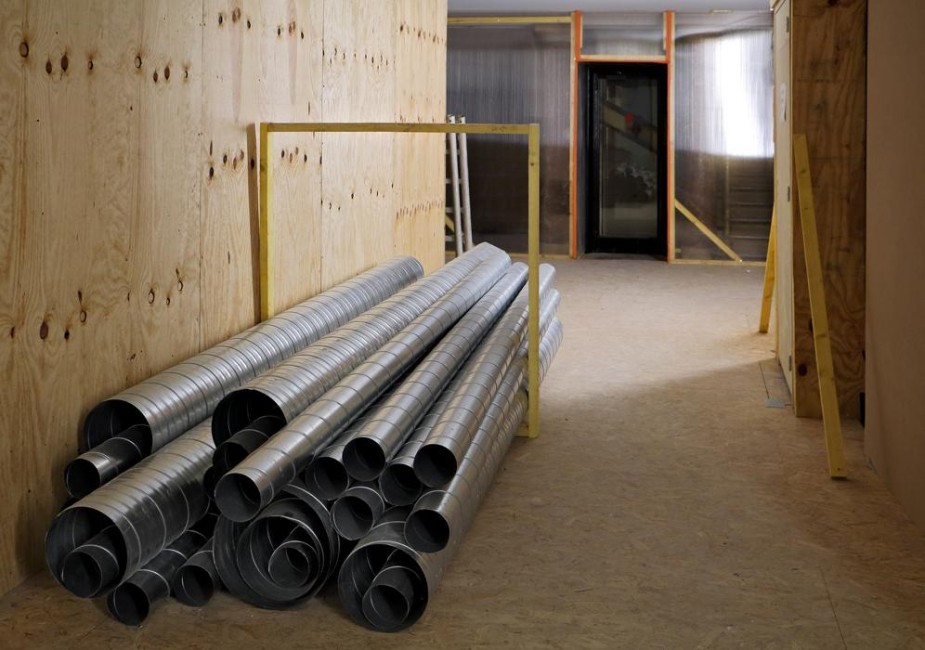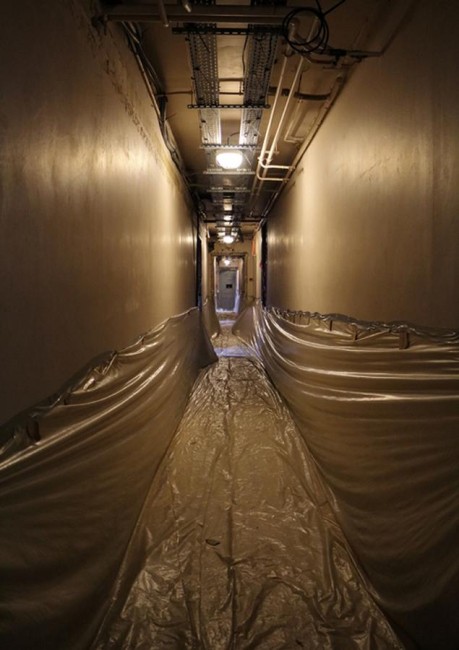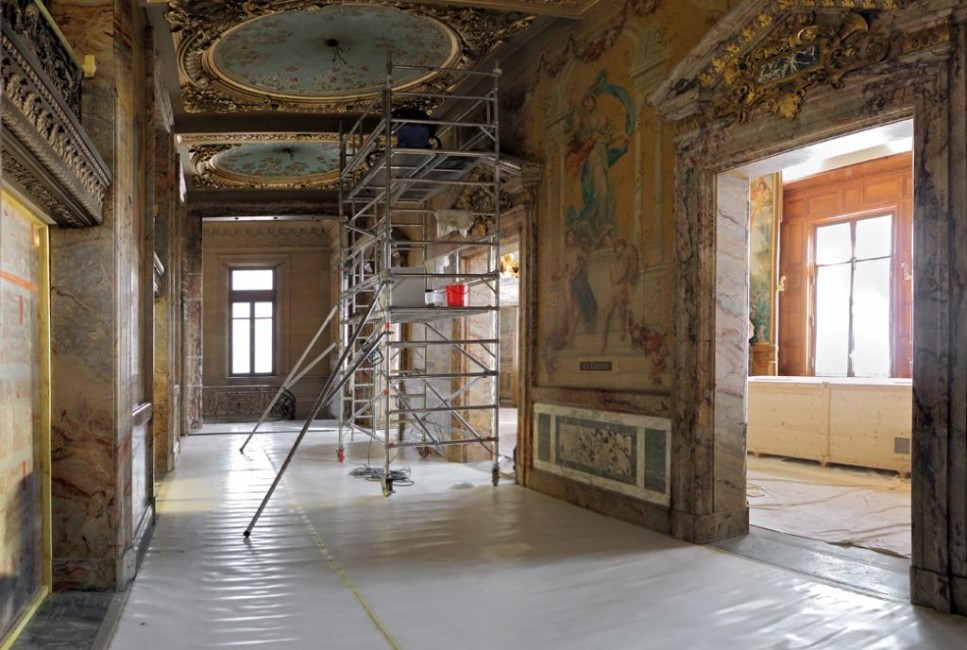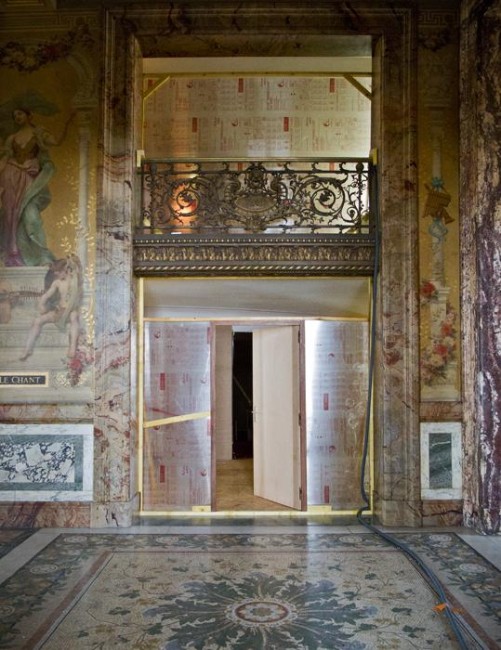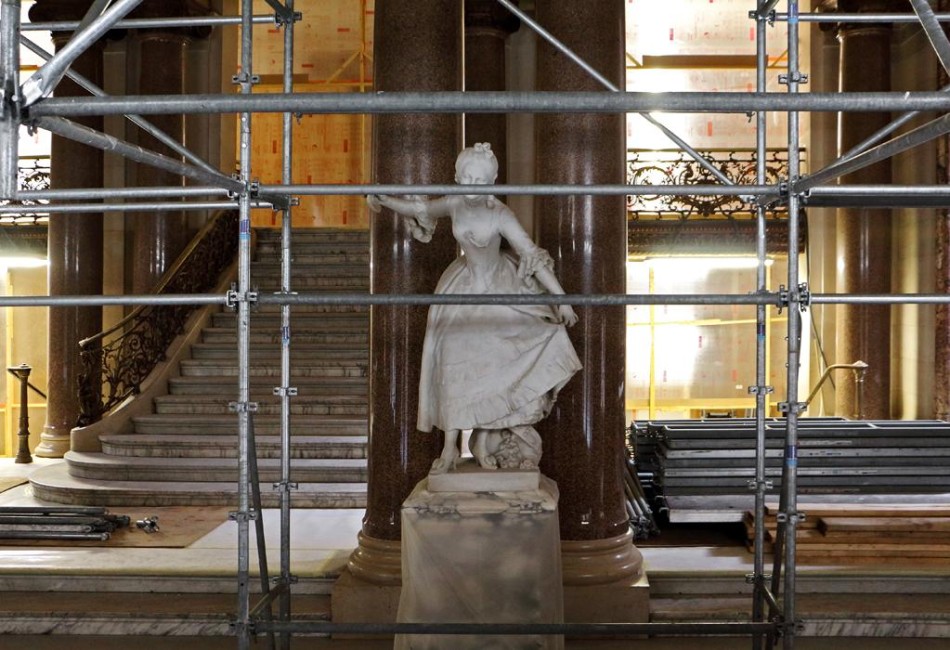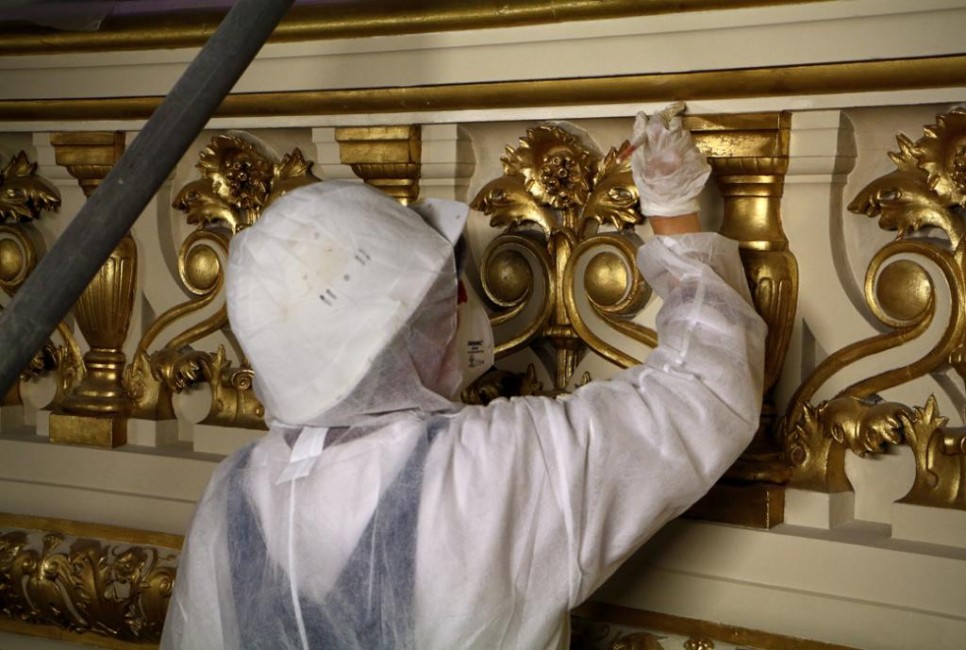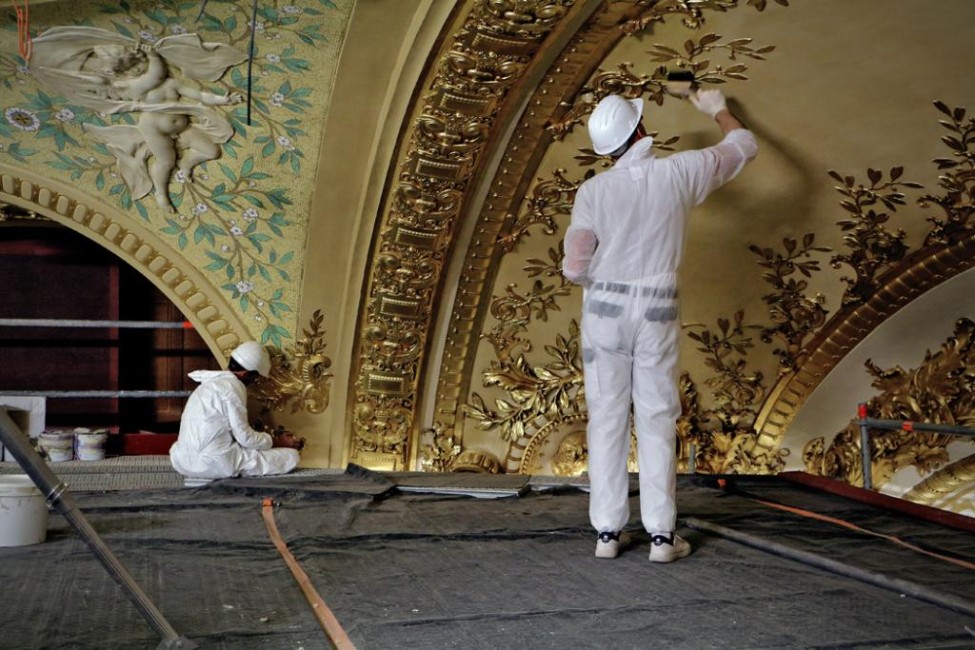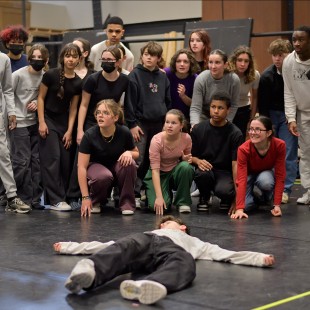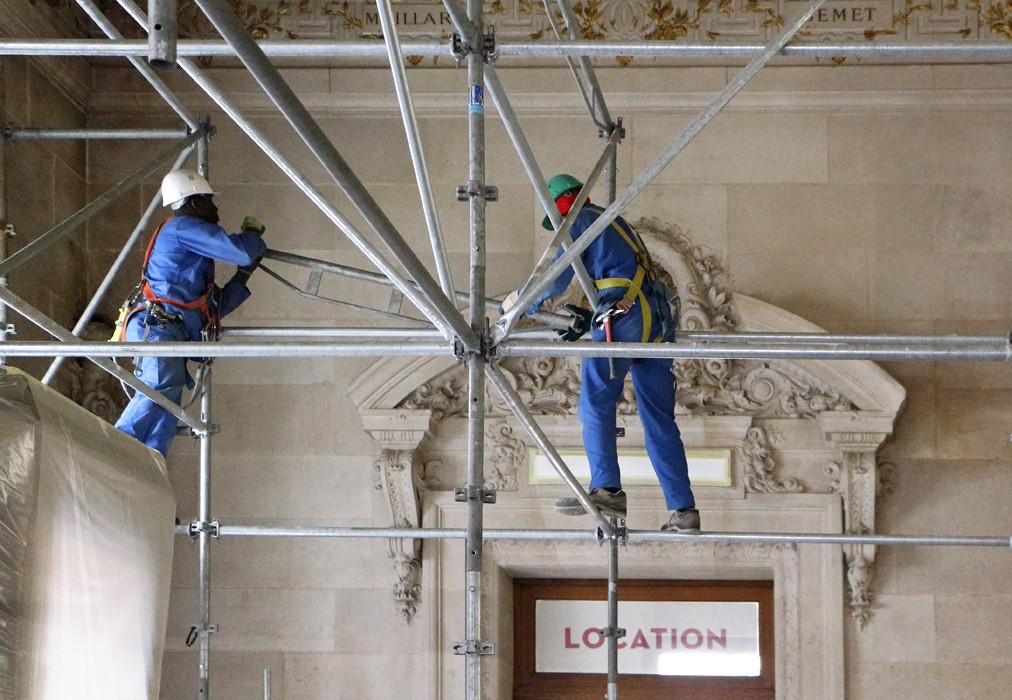
Photo © Stefan Brion
This was June 2nd. The day before workers had begun to take down the huge scaffolding that filled the auditorium from the orchestra to the ceiling. In the foyer, at dress circle level, some thirty people witnessed the presentation of the Fedora Prize rewarding an innovating European production every year.
The foyer is not among the spaces of the theater to be renovated and is isolated from the construction site by impermeable boarding with one door. Yet one could perceive a new element that has never been mentioned since we began to tell you of the progress of the renovation work: noise.
In the foyer on that rainy afternoon without microphone or artificial light due to the circumstances, the words of those giving the prize were followed by the recipients’ thanks. But the people in attendance, most of them journalists, had to prick up their ears. The speeches were covered by the roar of jackhammers and the creak of panels being dismantled outside, by the distinctive sounds of shovels turning over sand mixed with cement or adhesive tape being ripped to remove the huge plates that protect the marble columns. Noise enabled us to grasp the construction site in a new way no longer based on visible elements such as pipes, cases, tools or dust but on sounds. It reminded us of the rather tendentious Victor Hugo’s phrase: “Music is noise that thinks.” The noise from outside mixed up with the spoken words in the foyer made us think of what was being heard and the resulting sensation.
We’re accustomed to music but what could be the meaning of those weird intruders invading space?
Their presence was such that we wondered whether a construction site was erected and dismantled through noise, for the delight of builders, just like music combines sound and silence according to a given time to enchant music lovers. The time of the construction site could even be measured through noise. Thus, the cathedral of metal pipes inside the Salle Favart was assembled in five weeks and will be completely dismantled in only three weeks. Could the loudness of these two phases – a “regular” noise during disassembling, a deafening din for clearing – account for the sizeable time discrepancy of the two phases?
In the Salle Bizet, the marbles and gildings that have been treated contrast with those that haven’t yet. Here, the columns have been covered with a silicone film which acts imperceptibly to restore the stone to its original sheen. There, those that haven’t yet been covered bear the marks of time. The difference is striking and the 2017 operagoers, especially those who will attend the pre-performance presentations, won’t recognize this once familiar place. Cleanliness is coming back silently just like the concentration of workers giving back luster to the bas-reliefs of the proscenium arch with brush and gold leaf doesn’t tolerate any interference. A myriad of sounds on the one hand, calm and stillness on the other as well as the silence of matter and touch for a concerted action and an outstanding accomplishment. And if the guiding principle for construction sites in opera houses were: the deeper the silence the better the beautification?
In the lobby, workers wearing hard hats were imprisoning Manon and Carmen under the pipes just removed from the auditorium. This gave us a pretty good idea of the advancement of the work. So far, the deadlines were met. And a day will come when Carmen and Manon are released.
Then the sun will shine, noise will retreat, music will regain its home and the Opéra Comique will reopen in due time.



